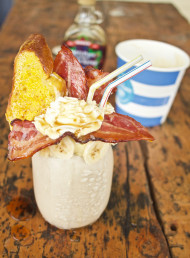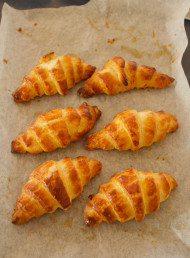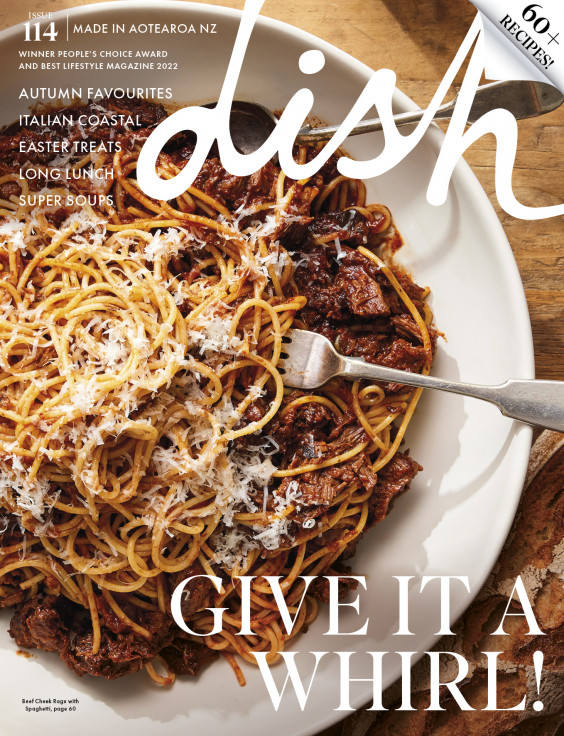Cook the Books – Patisserie: Master the Art of French Pastry
Photography by David Parker.

In this week's practical cookbook review, David Parker tackles the Choux Pastry from expert pastry chef Melanie DuPuis' new book.
Patisserie is a book by expert pastry chef Mélanie Dupuis and molecular gastronomist Anne Cazor who aim to make “even the most elaborate of French desserts achievable for the home baker” and they certainly go into some elaborate desserts! The book is split into two parts – the base recipes and then the pastries themselves. The base recipes cover all the different types of pastries, buttercreams, meringues and cakes that you'll be needing to make for the various pastries. The second half focuses on how to assemble all of the elements into a full recipe.
At first I was set on making Chiboust and Raspberry Tartlets, then I discovered that hemisphere silicone moulds were almost impossible to buy, as were the tart rings... After a week of research and trying to buy silicone moulds online I gave up and went back flicking through the book. Almost every recipe I wanted to try needed some sort of fancy cake ring/square form or something I just couldn't get. I settled on a recipe for Choux Pastry – I'd made choux pastry before so I thought it wouldn't be too hard...
Before I could even start the recipe I hit another roadblock: I couldn't seem to find praline and had no idea where to get it from, so I had to make it from scratch. First I blanched almonds briefly in boiling water to remove their skins.
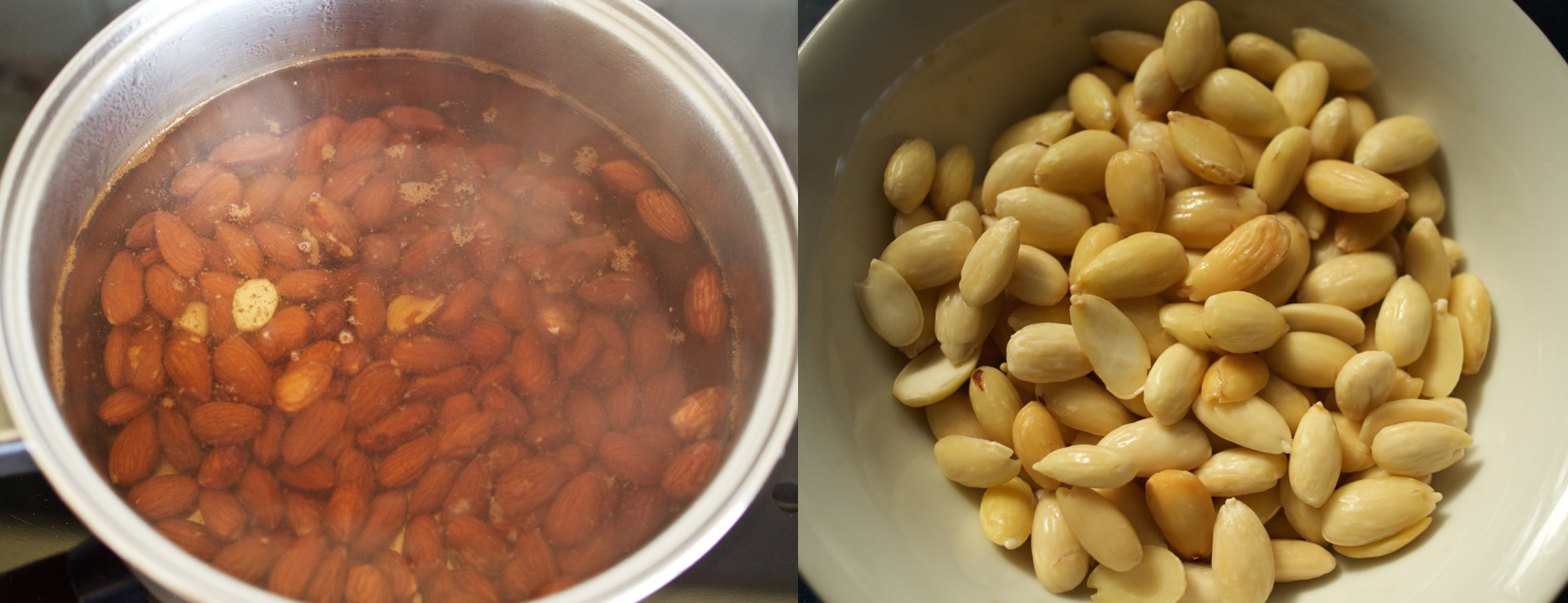
Then I had to caramelise some sugar, to which I added the almonds; to coat them in the caramel and then I tipped the caramel mixture onto a baking tray to cool.

The caramel coated almonds is referred to as 'praline'. However, I wasn't sure this it what the buttercream recipe was asking for. So I needed to turn the praline into praline paste. To do this I blended it in a food processor for what seemed like forever (at least 5 minutes) until the oils started to leak out from the nuts. I wasn't 100% sure if it had worked, at this point my paste still looked pretty lumpy but fearing the imminent explosion of our well-used food processor I called it quits.
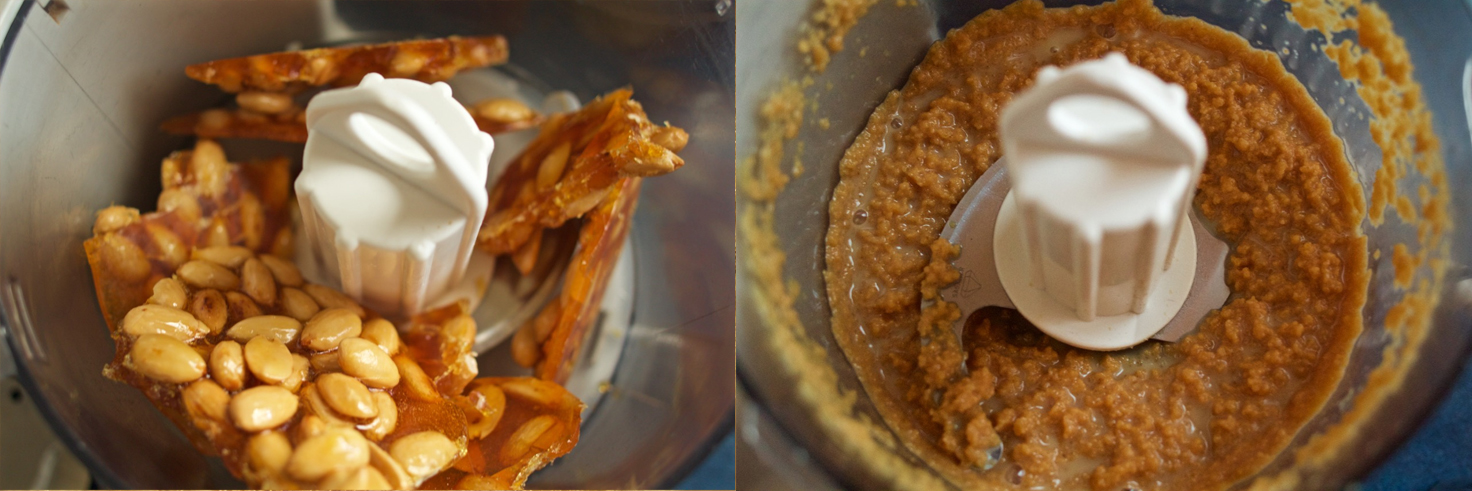
The recipe says to start with the choux pastry but I decided to start making the buttercream because I knew it'd take a while to cool. To make the buttercream I had to flick back to page 56 where I found that I now had to make the pastry cream recipe from page 52 and also needed to remember to add the 100g of flour and 160g of praline as specified on page 182... sound complicated? It was. I put down all the page-turning to the mistakes I made. The first being that the main Paris Brest recipe doesn't list a vanilla pod, but the Pastry Cream recipe does list a vanilla pod and I needed to make the pastry cream to make the German buttercream... I didn't have a vanilla pod so I put a teaspoon of vanilla essence in just to be safe.
I started by blanching the egg yolk and sugar, I wasn't sure what that meant, did I need to involve heat at this point? Fortunately I could flip to page 279 to find out that it just means to whisk the egg yolks with sugar until they turned creamy in colour. I knew sugar can "burn" egg yolk so you shouldn't leave them in the same bowl without combining them as your egg yolks can turn lumpy so I guess this blanching thing made sense. Then I added the cornflour and flour to the egg yolks and started boiling the milk and vanilla.

When the milk boiled, I added half to the egg yolk mix and combined it with a whisk. (All the pictures are with a hand whisk in the book but in the back of the book it suggests using an electric whisk to speed up the processes.) Then I poured the mixture into the saucepan with the rest of the milk and whisked while over high heat. It barely took any time to thicken. It almost felt too thick, the whisk was struggling to turn.
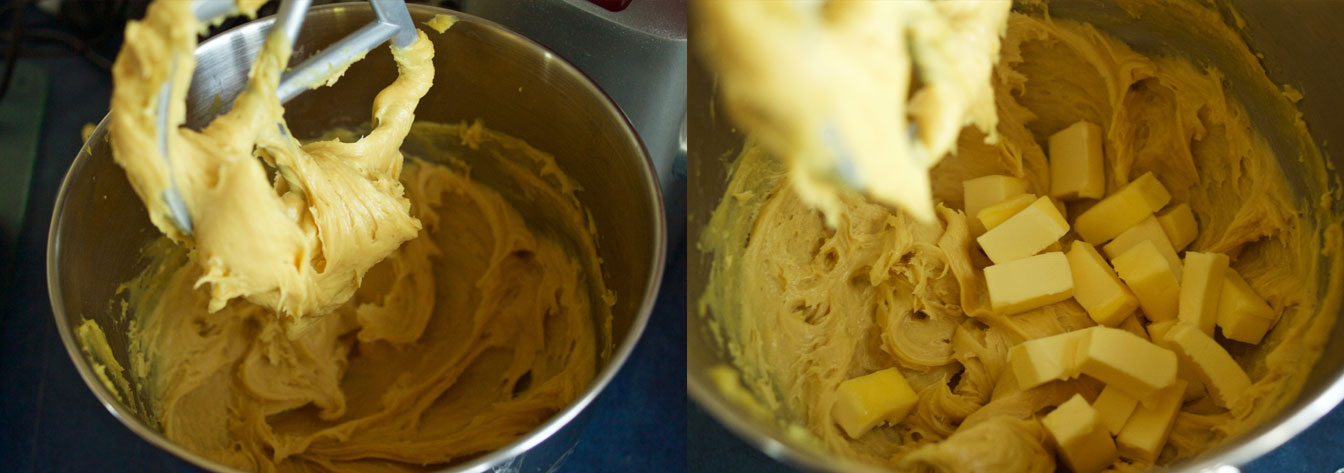
Nevertheless I pulled it off the heat, added the butter and left it to cool. Once it was cool I tried to incorporate the praline. It was impossible. I then flicked back to the Paris Brest main recipe where it said to add it while it was still hot. I figured I'd cut my losses and microwaved the now cool pastry cream, after it was hot again incorporating the praline was easy. Then I stuck it back in the fridge to cool off again before I beat in the remaining softened butter.
Now I could get on with the choux pastry. Of course the recipe for that was on a separate page so I flicked to page 28. I started by heating the milk, water, butter, salt and sugar in a saucepan until it started to boil. The book said to let it boil up toward the top of the pan but I chickened out about midway.

Then I removed from the heat, added the flour and mixed it in until smooth. Then I flattened down the mixture in the saucepan and put it back on to the heat to listen for cracking. This seemed to happen immediately and when I checked, it seemed like some of the mixture had stuck to the bottom of the pan. It wasn't really what I'd refer to as an "even film" as the book described so I left it for a bit longer. What probably was the "even film" started to brown so I decided it was done and took it off the heat and transferred to a piping bag.
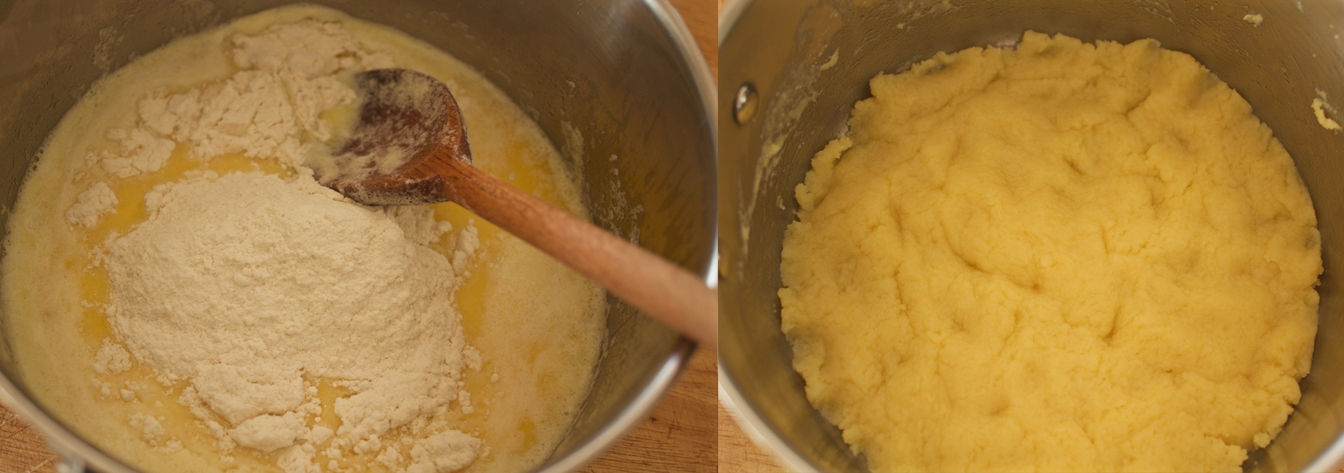
I tried to buy a no.10 piping tip as the recipe suggested but a Wilton no.10 is actually a really small tip, surely too small for choux pastry and a lot smaller than what the photo in the book looks like. I found a suitably large tip and fitted that instead. I can only assume they're using a different brand of piping tips but I couldn't find any information on what brand. (Groan, I just discovered a tiny bit of text in the back of the book where they say a no.10 tip would be 10mm in diameter.)

Anyway, I got on with piping the choux pastry, it's quite hard to tell how big they actually are, the recipe says I could make 12 but the photo shows 7 and I managed to make about 6.5? I just made them regular eclair-sized and assumed that was the right thing to do. I put the Brests in the oven and the recipe says, “Briefly open the door at the end of 20 minutes, to let the steam out. Bake until uniformly coloured, at least 20 minutes extra.” Somehow in my slightly confused state of flicking page to page to find the details of the recipe I misread this. In fact, I just missed the whole “at least 20 minutes extra” part. So I started baking the choux buns and a couple of minutes out from 20 minutes I let the steam out of the oven and at the 20 minutes mark I thought “hey they look great, better pull them out before they burn.”
Of course within minutes they were completely flat and when I bit into one it was still soft inside. Not ideal. I swore a bit, did the washing up, watched a bad movie and started making the choux again.
This time they stayed in for the full 40 minutes although I realised afterwards I was supposed to wash them with an egg mix and sprinkle flaked almonds over them. But who cares, I could just sprinkle them with almonds that will fall off immediately and you'd never know the difference (except I am telling you here). When the choux had cooled down I sliced them in half with a finely serrated knife and piped in the Praline German Buttercream. I carefully placed the sliced almonds on top, cursing them as I went, and sprinkled over icing sugar.

Was it all worth it? No. The German buttercream was so thick, it almost stuck to your mouth like peanut butter and was about as thick. But honestly it was quite bland – I put more than the recommended praline in as I was making it to try and sweeten it up (I had been tasting it as I made it) but I swear I could still taste the flour in it.
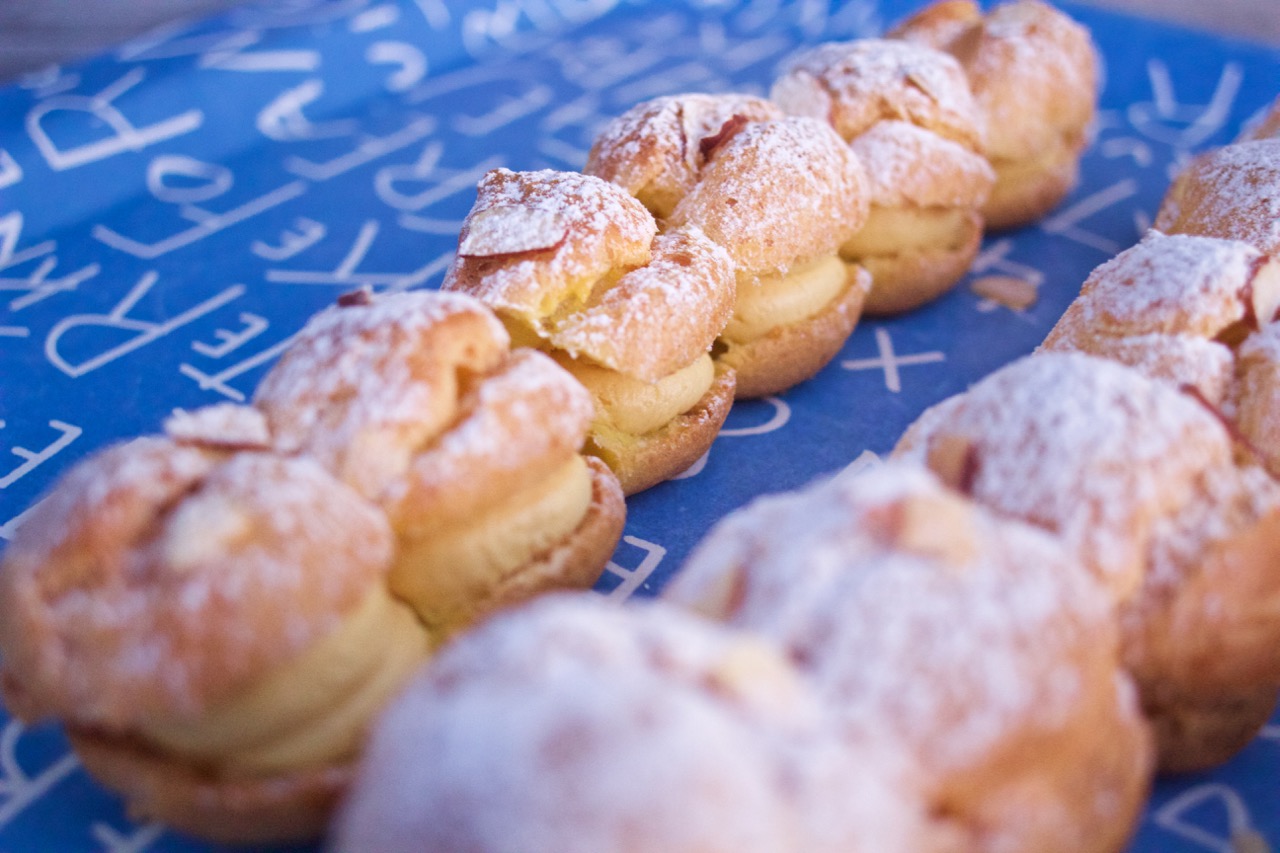
I think I would've added probably double the praline in the buttercream and maybe a lot less flour. Despite the thick and heavy buttercream, they were still quite nice –everyone said the choux was good, but no one ate much more than a couple of the little balls. I think the icing sugar made all the difference, without it they were almost savory but the icing sugar just tipped them over the edge into being sweet.
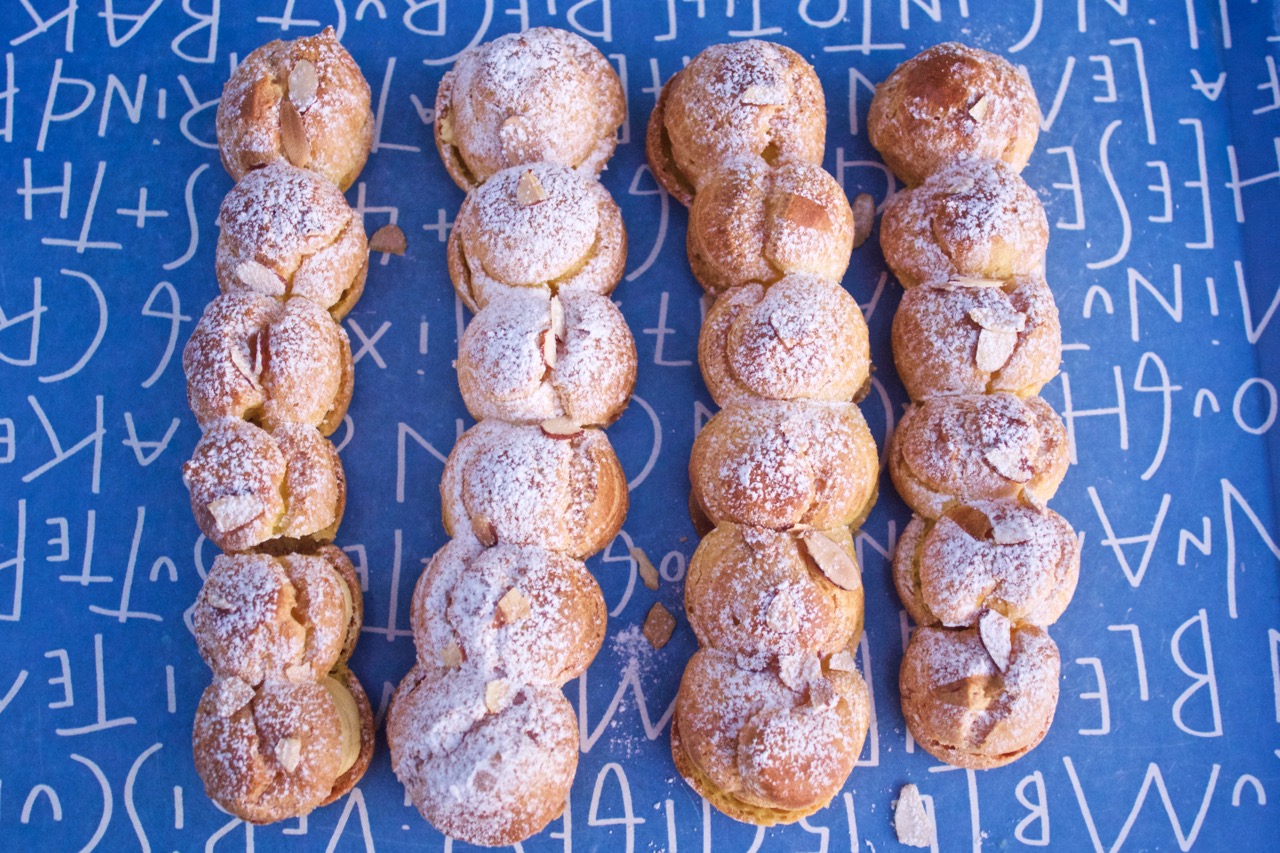
latest issue:
Issue #114
Autumn has arrived, and with it, the latest issue of dish, jam-packed with recipes that will have you fizzing to get in the kitchen! With a long Easter lunch featuring perfectly pink, blushing roast leg of lamb and wildly decadent baked mashed potatoes with caramelised onions, to simply scrumptious chocolate treats and sensational seasonal baking this issue has you covered - we reckon the Hot Cross Buns are our best yet! Salads make way for soothing soups, pies, puddings and our cover star beef cheek ragù with spaghetti – a must-make dinner for family and friends. With over 60 recipes in our latest issue there’s plenty of inspiration to keep you busy – and well-fed! Don’t forget to share your dish dishes with our Facebook community.

